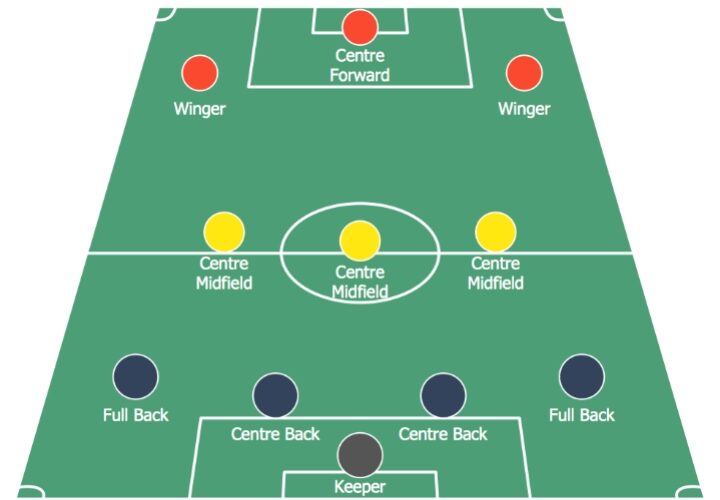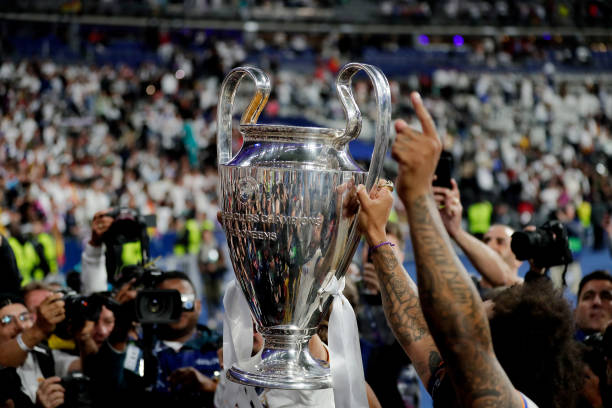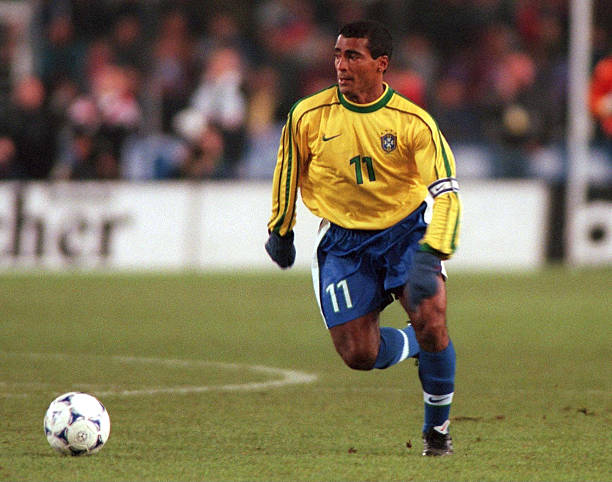In soccer, styles change like trends in fashion. But there’s one setup, the 4-3-3, that’s like a classic outfit—it never goes out of style. Soccer odds shift a lot, especially before a big title game, and in this world of changes, the 4-3-3 is a strategy that many top teams trust, time and time again. It’s been a favorite for the best clubs and national teams for years. The 4-3-3 formation has experienced a resurgence of some sort in recent times, and we discuss it in this article.
The Undying Charm of the 4-3-3
In the modern game, where teams seek agility and adaptability, the 4-3-3 formation is cherished for its dynamic nature. It’s akin to a multifaceted tool, suitable for an array of tactical scenarios.
With soccer now played at a breakneck pace and a premium placed on versatility, the 4-3-3 caters to these needs with remarkable efficiency.
The formation is lauded for enabling swift and seamless transitions from staunch defense to a formidable attack, with the midfield trio serving as the lynchpin in this fluid exchange.
History of the 4-3-3 formation
Journey back to the Dutch dominance of the 1970s, when the concept of “Total Football” revolutionized the pitch.
The 4-3-3 was integral to this approach, with its fluidity allowing players to interchange positions seamlessly. It was a stark contrast to the static play that had dominated the landscape. Today, the spirit of Total Football lives on in the 4-3-3, albeit adapted for the contemporary game’s pace and athleticism, blending the best of historical tactics with modern-day requirements. It is regarded as one of the best soccer formations of all time.
The Contemporary Game’s Demands and the 4-3-3’s Response
Contemporary soccer thrives on high-octane, pressing play. Here, the 4-3-3 thrives, fitting into the puzzle of modern soccer like the missing centerpiece.
With three midfielders who can pivot their role on the fly – from a shield in front of the defense to a spearhead of the attack – the formation’s inherent fluidity shines.
This adaptability is what has prompted the renaissance of the 4-3-3, allowing it to be tailored to various playing styles, from the tiki-taka possession-based to the direct counter-attacking ethos.
Flexibility: The Tactical Edge
Flexibility is the 4-3-3’s hallmark, offering a chameleon-like capacity to blend into the tactical landscape of a match. A team can transform from a compact defensive unit to a wide-reaching offensive network in moments.
It’s a shape-shifter, allowing for dynamic responses to the flow of the game. This adaptability is showcased by teams like Liverpool, where forwards fluidly interchange, dissecting defenses with their coordinated movement and precise spacing.
The Crucial Midfield Triad
At the formation’s core lies the midfield trio, each with distinct roles akin to the parts of a clock – the deep-lying playmaker is the pendulum, the box-to-box midfielder the gears, and the advanced playmaker or holding midfielder the hands, together dictating the tempo and rhythm of play.
Teams like Manchester City exemplify this, utilizing the likes of Rodri to orchestrate from deep, supported by energetic midfielders who contribute to all phases of play.
Redefining the Full-Back Role
In this era of the 4-3-3, full-backs are reimagined as dual threats. No longer confined to defensive duties, they are vital to the attack, overlapping with the dexterity of wingers and supplying crosses like seasoned playmakers.
Teams like Liverpool do this effectively, as Jurgen Klopp has turned Trent Alexander-Arnold and Andy Robertson into playmaking full-backs.
Their transformation has been such that they are now as essential in creating goals as they are in preventing them, offering additional width and tactical complexity to the setup.
Tactical Versatility Against Diverse Opponents
The 4-3-3 excels in its chameleon-like ability to adapt to the opponent’s strategy. Whether facing a team that fortifies their defense or one that presses aggressively, the formation can be tweaked to control the game’s tempo, maintain possession, or launch devastating counter-attacks. This tactical elasticity is why the formation is so prevalent across leagues with a broad spectrum of playing styles.
Mastering the Art of the 4-3-3
Despite its many strengths, the 4-3-3 demands a delicate balance. Missteps in player discipline or role execution can lead to vulnerability. It’s a formation that requires meticulous coaching, with each player needing a profound understanding of their duties within the collective system.
Conclusion
In summary, the 4-3-3’s lasting spot in soccer shows it’s got something special. It’s like a Swiss Army knife for coaches—super adaptable, great for keeping the team even and strong, and it plays nice with all kinds of game plans. As soccer keeps changing, this formation is like a favorite chapter in a long, exciting story. It’s stood the test of time because it works, whether a team’s pushing forward or holding back.
And it’s not just about winning games; it’s about making the sport beautiful, showing off the kind of teamwork and smart plays that fans love to see. That’s why the 4-3-3 isn’t just a formation; it’s a big part of soccer’s heart and history.








